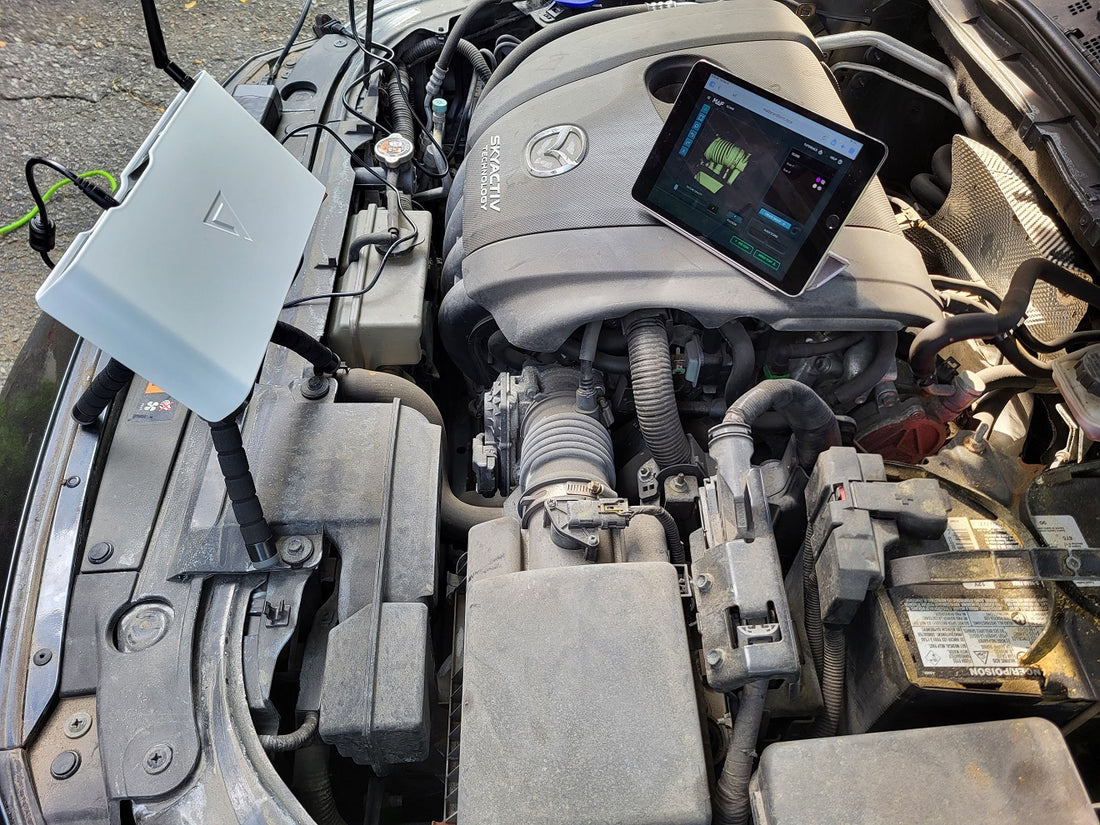Every scanner company advertises their amazing resolution and accuracy values (50 microns, 30 microns, 10 microns, oh my!) but then you see scan results and they don’t look very “accurate” at all. To make things even more confusing, sometimes “accuracy” and “resolution” are used interchangeably.
Let’s talk about what these terms mean, how they’re calculated, and how we dare to claim that THREE is the most capable 3D scanner ever made.
2D versus 3D Resolution
Anyone into digital photography is already familiar with resolution. A camera’s resolution (2D resolution) is the total number of pixels inside the image. When a camera has 1 megapixel, it means that the pictures it takes will have approximately 1 million pixels inside.
Defining the resolution of a 3D scan is a little different. For starters, a scan has 3D pixels we call points. And instead of counting the total number of points in a scan, we look at their density, or more simply, the distance between each point. This distance is a foundational part of resolution, but it’s not the only part.
What affects Resolution?
Resolution is a measurement of distance, and it has 3 main factors.
- The number of pixels the cameras can capture
- The camera lens’s field of view
- The distance of the camera to the object
Higher resolution cameras offer more pixels in the image, and more pixels in, means more points out.
The lens contains the camera’s pixels within its field of view, and a wide field of view spreads the pixels across a larger physical space. A lens with a narrow field of view compresses the pixels into a smaller physical space.
Smaller pixels = smaller distance between the points = higher resolution.

The closer an object is to the camera, the more it fills the frame, which means more pixels are covering it, which means it will be scanned with higher resolution.

Same field of view, but the camera is closer (left) and farther away (right). A similar effect to changing the FOV.
These two images have the same field of view and the key is visible in each. However, the camera is much closer on the left, so more pixels are covering the key, which means it will be measured at a higher resolution than it would be in the right-hand image.
What is Accuracy?
3D scanners are measuring devices, and the standard deviation of those measurements is known as accuracy. Accuracy is a result of the following:
- The scanner’s resolution
- The quality of the calibration
- The physical qualities of the object being measured
- The distance of the camera to the object
Higher resolution scanners are more accurate, but a good calibration is required. Calibration quality comes from having good software and hardware routines to quantify the scanner’s optical properties.
The object being scanned also affects accuracy. A matte, non-moving object will let the scanner achieve its best accuracy. On the other hand, if the object is shiny, it doesn’t matter how high the scanner’s resolution is, the scan won’t be accurate.
Both resolution and accuracy are directly proportional to how far the scanner is from the object being scanned.
Let’s say you have a 1 inch square area to scan. If your scanner is close, maybe that 1 inch square has 500,000 pixels covering it. That’s 500,000 individually-measured spots inside the 1 inch area.
If you move the scanner further away, those same 500,000 points are spread over a larger area, and your resolution and accuracy are reduced accordingly.
Camera Focus - The Missing Piece
Most 3D scanners have their cameras focused and locked to a specific distance, and this is why there are so many different kinds of scanners. Some of them are designed for close-up work to capture extremely small details, some are designed to be farther away, to capture larger objects. Small object scanners aren’t going to scan larger objects, and vice-versa.
Focus affects accuracy in a major way. Consider these two images. One is in focus and the other is not. Which one would you expect to be more accurate?
Look at the images below. Which do you think will result in a better 3D scan?

Blur - this scan will not be accurate

Focused - far better scan results
THREE: The Most Capable 3D Scanner Ever Made
From a resolution and accuracy point of view, THREE holds its own with the best of the best metrology scanners. But as shown above, resolution and accuracy are only part of the puzzle. The last part is focus, and this is where THREE really lets you shine. THREE has cameras that focus between 20 cm (7.87”) and 80 cm (31.49”), which is why it can accurately scan such an incredible range of object sizes.
For these reasons, and several others, we call THREE the most capable scanner ever made.
We are so excited to bring it to you! If you haven’t already, sign up on our homepage for updates and crowdfund pre-launch notification.

